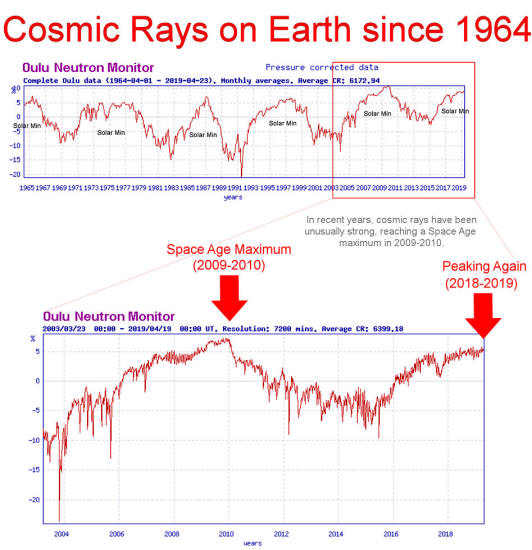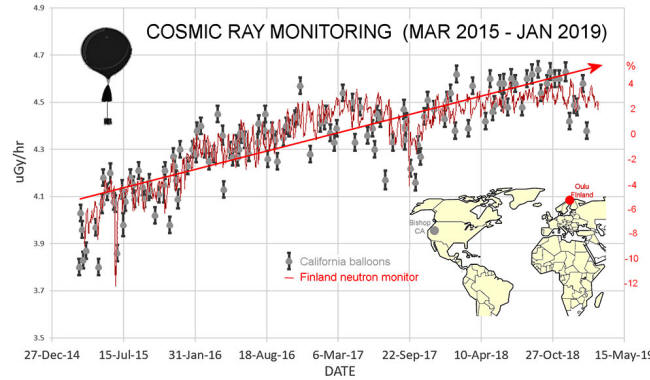|
by Dr. Tony Phillips
Ten years ago, NASA reported a "perfect storm of cosmic rays."
During the year 2009,
radiation peppering Earth from deep space reached a 50-year high,
registering levels never before seen during the Space Age.
The Oulu
neutron monitor in Finland, which
has been making measurements since 1964, reports levels in April
2019 only percentage points below the Space Age maximum of 2009:
Source: The Sodankyla Geophysical Observatory
in Oulu, Finland.
During the low phase of the 11-year solar cycle, the sun's magnetic field and solar wind weaken. Cosmic rays find it easier to penetrate the inner solar system.
In 2009, the sun experienced the deepest solar minimum in a century. Cosmic rays reaching Earth naturally surged. Ten years later, solar minimum is back with renewed weakening of the sun's magnetic field and the solar wind.
Again, it's a "perfect storm"...
A panel of experts led by NOAA and NASA recently predicted that the current minimum would reach a nadir in late 2019 or 2020, likely matching the record-setting minimum of 2009.
If they're right, cosmic
rays will continue to increase, with a new record possible in the
near future.
Indeed, this is what neutron monitors and cosmic ray balloons are measuring:
This spray is of special interest to air travelers.
Secondary cosmic rays penetrate the hulls of commercial aircraft, dosing passengers with the whole body equivalent of a dental X-ray even on ordinary mid-latitude flights across the USA.
International travelers receive even greater doses (below video)...
Moreover, a recent study (Cancer Prevalence among Flight Attendants compared to the General Population) by researchers at the Harvard School of Public Health shows that flight attendants face an elevated risk of cancer compared to members of the general population.
They listed cosmic rays
as one of several risk factors...
|




